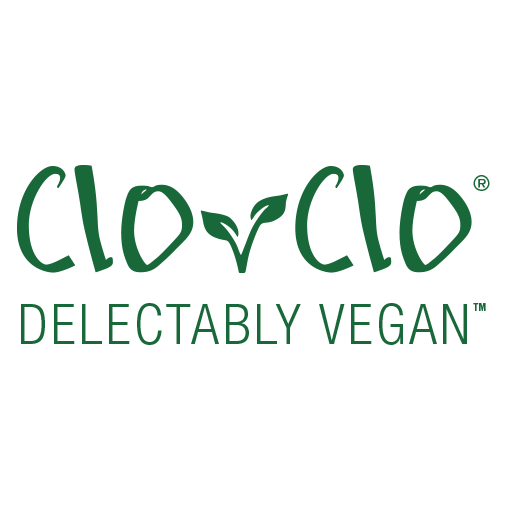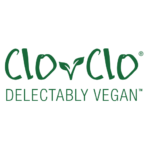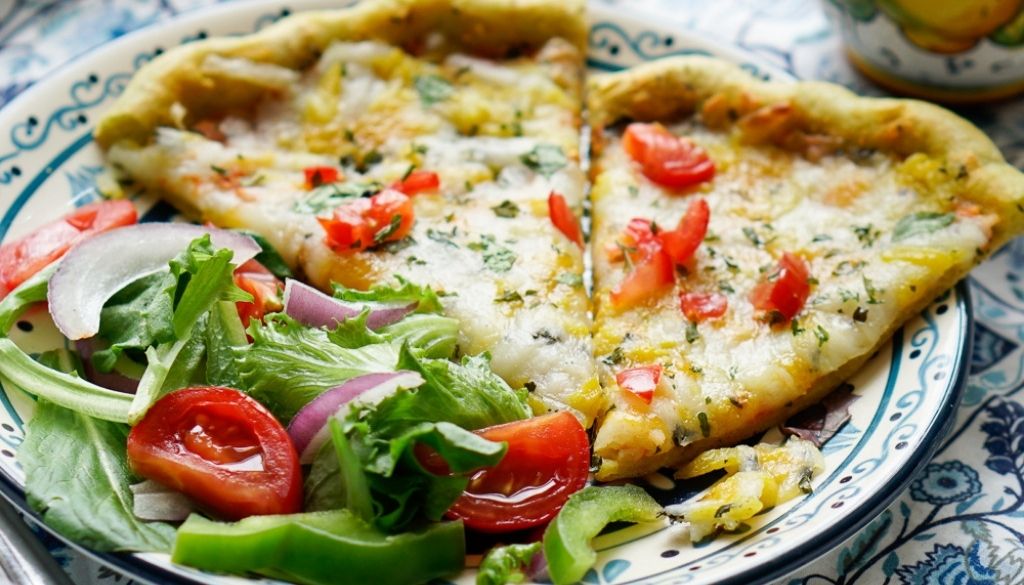Transitioning to a Vegan Lifestyle
So you’ve decided that you’d like to become vegan, but where do you start? Transitioning to a vegan lifestyle can seem really daunting but often the idea of a big lifestyle change is a lot scarier than actually doing it. If you focus on making one change at a time the progression to veganism will feel quite natural. It’s important to go at your own pace and to decide on a method that works best for you. Here are some ideas and guidelines to structure your transition to veganism, just be sure to tailor them to your specific needs.
Learn As Much As You Can
Before you even begin the transition the first step is to start familiarizing yourself with veganism. This will really help you feel prepared and knowledgeable as you begin changing your lifestyle.
- Learn the benefits of a vegan lifestyle and educate yourself about the practices and costs behind the production of animal products. Find your own personal reasons for being vegan, there’s loads of them.
- Learn how to optimally nourish your body on a plant-based diet.
- Start reading ingredients lists – Learn how to tell if a product is vegan and familiarize yourself with the less obvious animal derived ingredients that show up in unsuspecting products.
- Be on the lookout for vegan products at your local grocery store, research vegan friendly restaurants and grocery stores in your area.
- Read, watch, learn. Seek out vegan documentaries, books, magazines, websites, blogs, forums, and people. They can offer valuable insights, support, and will help you to feel more confident in your transition.
Add to Your Diet
- Begin incorporating more whole grain, beans, legumes, nuts, seeds, and tofu into your diet. Familiarize yourself with their preparation, storage, and uses.
- Start collecting and experimenting with vegan recipes that appeal to you.
- Find a few different quick and easy vegan meals that you enjoy and get comfortable preparing them.
- Switch out milk for a non-dairy alternative such as almond or soy. This is an easy switch for most people but there’s a lot of options, so experiment to find which you like best.
Find & Remember Your Motivation
There is a huge difference between adopting a vegan lifestyle and “going on a diet”. It’s easy to be tempted into straying from diet plan or “cheating”, but it’s not the same with veganism. When you know exactly why you want to be vegan you simply don’t stray from the lifestyle. This is why it is so important to learn the benefits of a vegan lifestyle and the effect animal products have on our health, environment, and humanity. Once you’ve taken the time to open your eyes to the real effects animal products have on our lives it just sticks with you and there’s no going back on that.
Keep a Positive Attitude
Think of all the new and delicious foods there are to try rather than thinking about the foods you’re giving up. You may find yourself surprised at how many options there really are. Some of your favourite foods are probably vegan to begin with, there’s loads of international dishes that are suitable for vegans, it can be so easy it is to veganize your old favorite meals and recipes. Don’t worry about the changes you’re making, get excited about them!
Plan Your Transition
This is where you need to seriously think about what is going to work best for you. There are plenty of ways to go vegan you just have to find what’s best for you. Here are some common options and some different ideas for ear approach. Find something that appeals to you and tailor it to your needs!
1) Vegetarian Followed by Veganism:
- Go vegetarian and then move onto veganism either in one step or by cutting out dairy and eggs one at a time.
Making the Transition:
- Remove all meat from your diet, including fish and poultry. Take care not to increase your consumption of eggs and dairy to take the place of meat, focus on including more plant-based protein sources instead.
- Pay attention to ingredient lists, avoid products containing gelatin, rennet, and other animal products (excluding dairy and eggs).
- If you haven’t already, begin incorporating more whole grains, beans, legumes, tofu, nuts, and seeds into your diet.
- Once you feel comfortable to move forward you can start phasing out dairy, eggs, and honey. Feel free to do this all at once, one food group at a time, or as slowly as you need to.
2) Slow Transition from Omnivore Vegan:
- Slowly cut out animal products, starting with the easiest and leaving barrier foods to the end.
- Slowly lessen your consumption of animal products while simultaneously increasing the number of plant-based foods in your diet. Continue until you’ve eliminated all animal products from your diet.
Making the Transition:
- Remove any animal products that you won’t miss in your diet.
- If you haven’t already, incorporate more whole grains, beans, legumes, tofu, nuts, and seeds to your diet while simultaneously cutting down on the animal products that you’ll miss the least.
- You can gradually cut down on all animal products or remove one food/food group at a time.
- Remove barrier foods after you feel comfortable with all of the other changes in your diet.
- Pay attention to ingredient lists, you may find it easier to begin avoiding the less obvious animal derived ingredients one at a time. You can also choose to overlook them until you’ve removed all obvious animal products (meat, seafood, dairy products, eggs, etc.) from your diet and you feel comfortable eating mostly plant-based foods.
3) Go Full-On Vegan:
- Cut out all animal derived ingredients and incorporate lots of whole grains, beans, legumes, tofu, nuts, and seeds for a healthy vegan diet.
- Swap out all of your favourite non-vegan items for vegan alternatives. Many people find that relying on vegan burgers, hot dogs, deli slices, cheeses, etc. can really help ease the transition when cutting out animal products all at once.
Making the Transition:
Some people find relying on vegan alternatives and convenience foods very helpful in easing the transition to veganism. They’re often high in protein, fortified with lots of vitamins and minerals, quick and easy to prepare, delicious, and familiar. However, some veggie burgers, veggie dogs, vegan deli slices, etc. are highly processed. Once you begin to feel comfortable with your vegan lifestyle, the use of these products can be lessened. There’s nothing wrong with eating the products in moderation, but they shouldn’t be used as your main source of vitamins, minerals, and protein for the long-term.
Veganism is much more than a diet, it is a compassionate lifestyle. These guidelines are mostly for transitioning to a vegan diet as that tends to be the most difficult part of becoming vegan. It’s also important to learn about vegan alternatives for other products in your life, such as personal care items, clothing, shoes, and other household items.
All-Or-Nothing Thinking & Food Barriers to Veganism
If you have the desire to become vegan but find yourself struggling with the idea of cravings or giving up a particular food, don’t worry, that’s completely normal! These are challenges, but they certainly don’t have to be barriers. Most vegans stop eating animal products for ethical reasons, not because they don’t enjoy the taste of them. It might sound silly but there are lots of cheese-loving vegans out there!
Far too often people shrug off the idea of veganism for fear of missing a particular food, or they try veganism but end up giving it up in it’s entirety for similar reasons. This is often the result of jumping into veganism too quickly with too little preparation. That’s why it is so important to take the transition at a pace that works for you so that it’s sustainable.
There’s a couple of methods that are extremely effective at dealing with these “barrier foods”.
Learn the Production Practices of Your Barrier Food
Learn the ins and outs of how the particular food is produced – this is often enough to turn you off the food for good.
Cut Out All Barrier Foods Completely & Wait for the Cravings to Subside
Cut out all barrier foods at once. Most people find that cravings for these foods only last a few short weeks and then they subside.
Try slowly introducing vegan alternatives to some of your favourite foods. For some items in particular such as cheese and yogurt you may want to give it a few more weeks before experimenting with substitutions – many people find that the longer it’s been since they’ve had the “real thing”, the easier it is for a vegan substitution to satisfy their craving. I found this to be very true for vegan cheese. As a new vegan, non-dairy cheeses didn’t do much for me but after a few months of having little bits here and there, the flavour of Daiya really began to grow on me. Now I find it does a great job at satisfying a cheese craving!
You’ll also have to find which products you like the most and learn how to prepare them to your liking through a little bit of trial and error.
Leave Barrier Foods to the End of Your Transition
If the idea of becoming vegan appeals to you but you feel like you’ll miss a certain food too much to commit 100% to the vegan lifestyle, then start the transition and leave that food until the end. Phase your barrier foods out in a very slow, controlled manner over a few weeks or even months. By this point, you might find that removing the food from your diet is a lot easier than you thought it would be!
If for whatever reason you feel as though you just cannot commit to a 100% vegan diet because of a barrier food, that’s okay! Don’t let that stop you from minimizing your intake of animal-based products to whatever extent you can. Give up all of the animal ingredients and foods that you won’t miss, and allow yourself the occasional exception whether it’s a food, holiday meal, or favorite restaurant. I advocate following a fully vegan diet and I encourage you to strive towards that as a goal, but it’s just silly to abandon veganism in its entirety because you love bacon or cheese too much. Don’t let yourself get caught up in trying to label yourself based on your diet, this is a sort of all-or-nothing thinking that’s simply not constructive. If allowing a little flexibility is what will help you sustain a mostly vegan lifestyle then that’s exactly what you should do! This also serves to make the vegan lifestyle a lot less daunting and more approachable to others.
Try Clo-Clo’s Vegan Pizzas
Looking for an easy vegan meal but don’t know what to make? Try any of our five Clo-Clo Vegan Pizzas or build your own pizza with our Vegan Pizza Crust and let us know what you think.
Source: I Love Vegan





No Comments